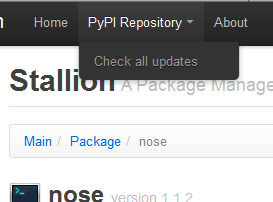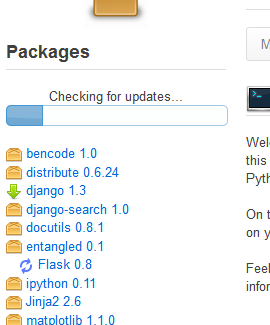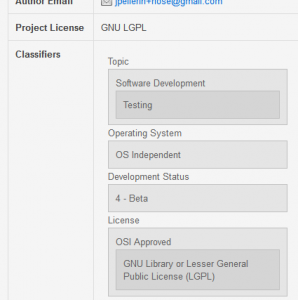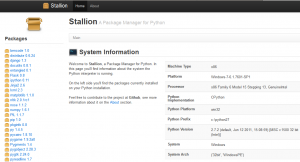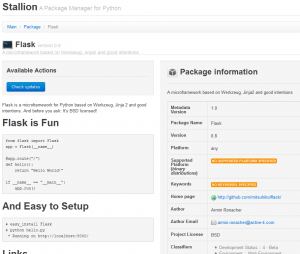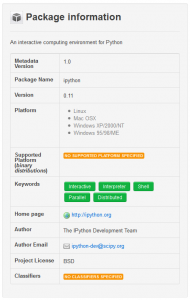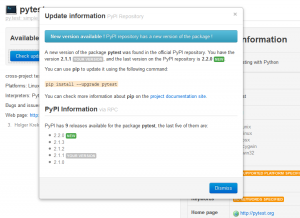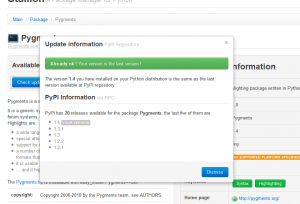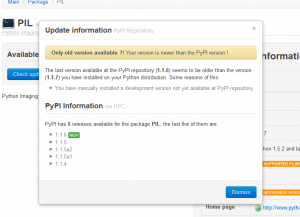I just tagged and released the v0.2 version of the Stallion. In the change log (Github project page), you can see that a lot of bugs were fixed and some new features were introduced in this release. I added compatibility with almost all Python 2.x versions, PyPy 1.7+ (and probably older versions too), I also fixed the compatibility with the Internet Explorer browser, now you should be able to use Stallion with Chrome, Firefox and IE.
The most important feature introduced is the global checking for updates (a lot of people requested it):
The new checking is under the menu “PyPI Repository”. Another new feature is the refactoring on the visual appearance of the package classifiers:
Some small visual enhancements were also introduced, like the little gray marker next to the selected package:
I hope you liked, I’m looking forward to implement more features as soon as possible, but a new version shouldn’t be released until next year.
Visit the project page at Github to get instructions on how to update or install Stallion.
– Christian S. Perone
